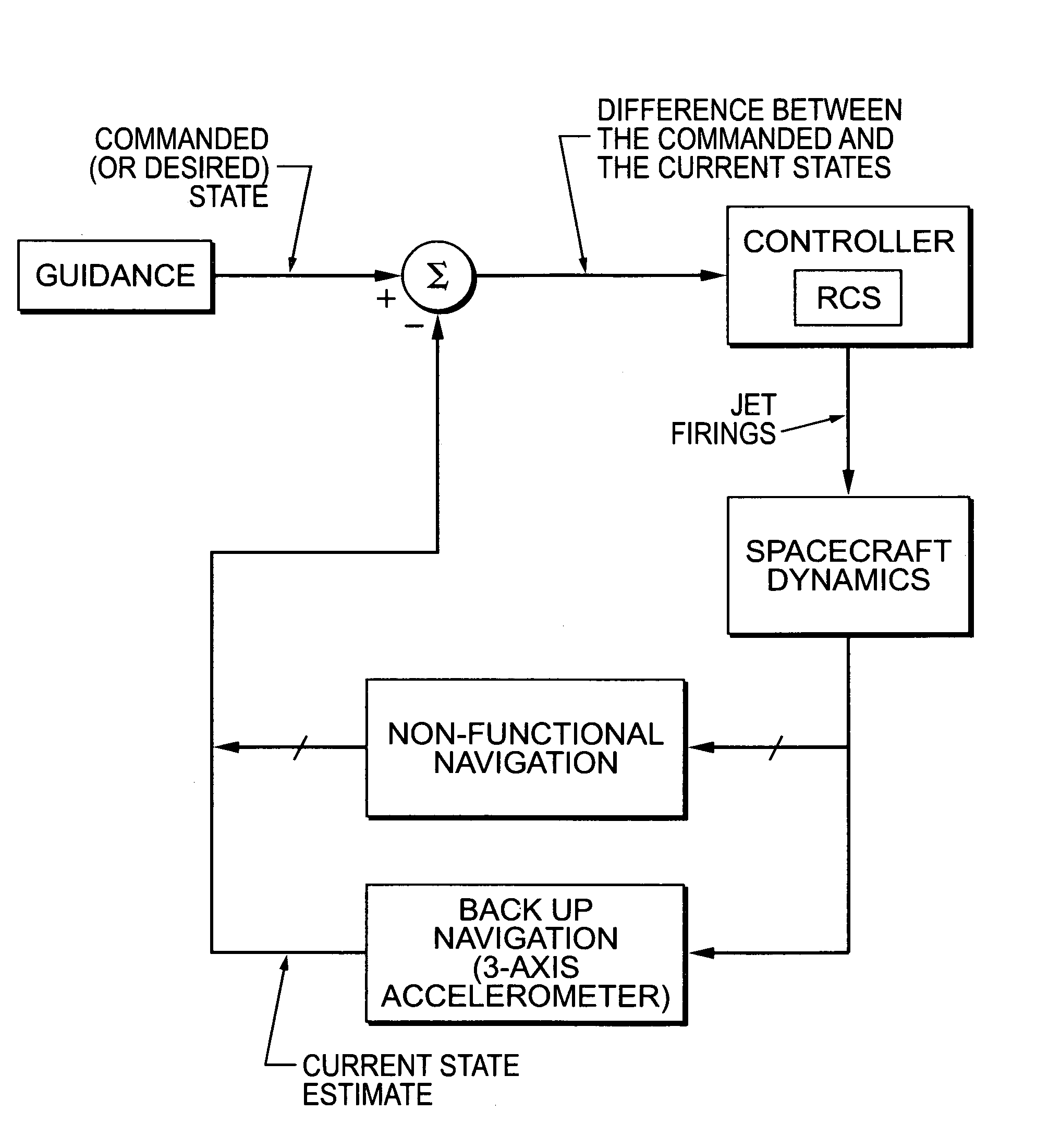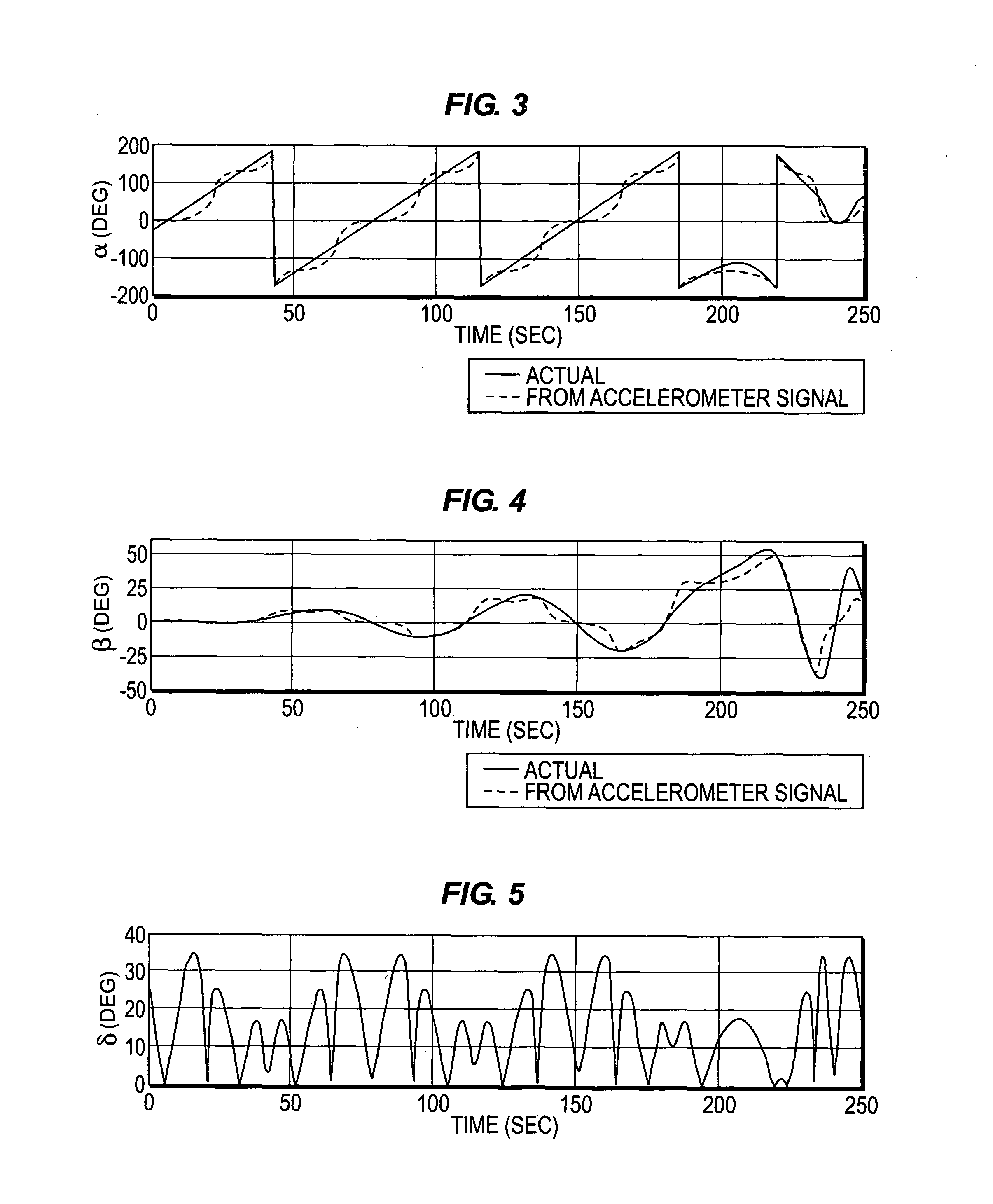Attitude determination with three-axis accelerometer for emergency atmospheric entry
an accelerometer and three-axis technology, applied in the field of emergency atmospheric entry safety back up methods and systems, can solve the problems of never being proposed or conceived as an instrument, no reliable attitude or angular rate information is available from the navigation system, and the inability to fly a guided atmospheric entry
- Summary
- Abstract
- Description
- Claims
- Application Information
AI Technical Summary
Benefits of technology
Problems solved by technology
Method used
Image
Examples
Embodiment Construction
[0020]The invention relates to a backup for a spacecraft navigation system that can be used to conduct a safe emergency ballistic atmospheric entry.
[0021]The backup system is provided in the form of a 3-axis accelerometer, a pair of algorithms either of which can be selected for use, and a processor running the selected algorithm so that the spacecraft attitude can be determined in terms of the aerodynamic angles (angles of attack, sideslip and roll) with enough accuracy as to attempt an emergency ballistic entry.
[0022]An emergency ballistic entry requires three phases to be executed in sequence:
[0023]First, in case the spacecraft is tumbling, any initial rates must be canceled. A tumbling motion can be originated by a stuck-on jet, for example, or by other RCS failure (in such a case, the spacecraft would disable the failing system and would enable a backup RCS system). Arresting a possible tumbling motion is necessary to prevent the spacecraft from entering the atmosphere in an ad...
PUM
 Login to View More
Login to View More Abstract
Description
Claims
Application Information
 Login to View More
Login to View More - R&D
- Intellectual Property
- Life Sciences
- Materials
- Tech Scout
- Unparalleled Data Quality
- Higher Quality Content
- 60% Fewer Hallucinations
Browse by: Latest US Patents, China's latest patents, Technical Efficacy Thesaurus, Application Domain, Technology Topic, Popular Technical Reports.
© 2025 PatSnap. All rights reserved.Legal|Privacy policy|Modern Slavery Act Transparency Statement|Sitemap|About US| Contact US: help@patsnap.com



